Authorized Representative Letter Template Guide
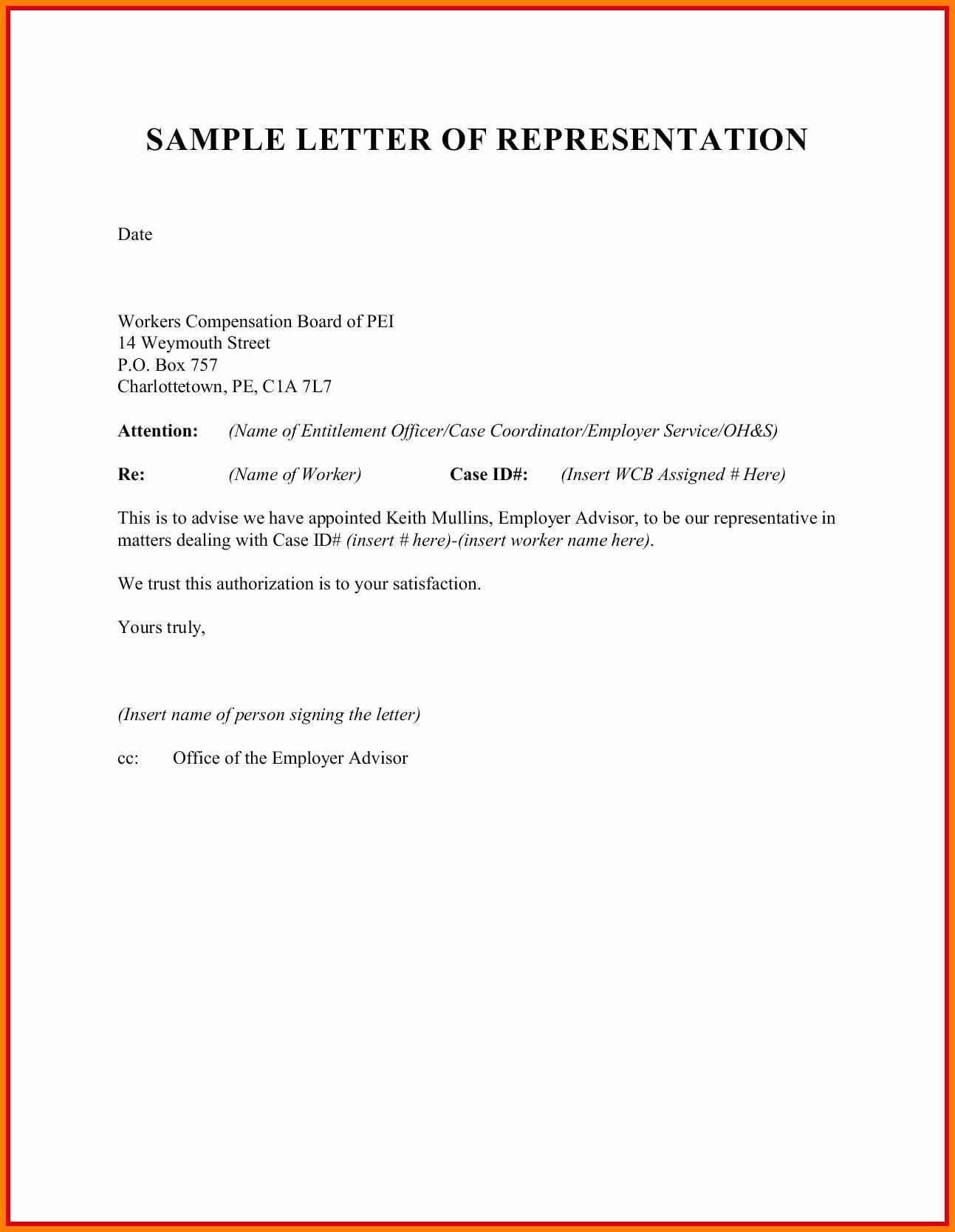
When you need someone to act on your behalf in various legal or business matters, it’s crucial to provide them with the proper documentation. This type of paperwork ensures that the individual is legally empowered to make decisions or sign documents in your stead. Understanding how to construct such a document is key to maintaining clarity and avoiding confusion.
Crafting the right structure for this kind of agreement is vital, as it must clearly outline the scope of power being granted, along with the limitations and responsibilities involved. Without the right language and details, the person entrusted with this responsibility may face challenges in executing tasks on your behalf.
By following a proven structure and including the necessary components, you can create a reliable, comprehensive instrument that meets both legal standards and your specific needs. This guide will walk you through the process of drafting a document that is effective, professional, and tailored to your situation.
Authorized Representative Letter Template
When granting someone the right to act on your behalf, it’s essential to draft a document that clearly defines the scope of their authority. This formal agreement serves as a written confirmation of the individual’s power to make decisions, sign contracts, or handle other matters in your absence. The clarity of the language used ensures that both parties understand their roles and responsibilities.
The structure of such an agreement typically includes essential components such as the names of the involved parties, a description of the specific tasks or actions authorized, and the duration of the agreement. It is important to provide precise details to avoid misunderstandings and legal complications later on.
Once the document is drafted with all necessary details, it should be signed and dated by both parties to make the authorization official. Including additional clauses related to revocation or modification of the agreement can offer further flexibility and protection for all involved.
Understanding the Importance of Authorization
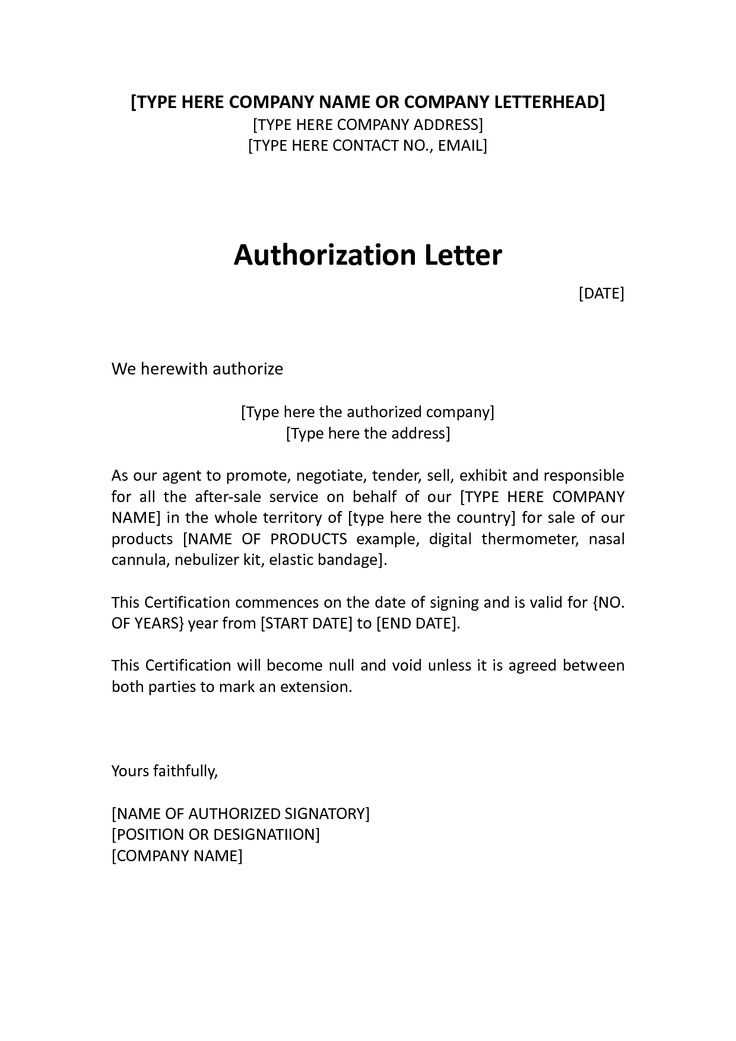
Granting someone the ability to act in your place is a significant decision that requires careful consideration. Whether handling financial matters, making legal decisions, or managing other responsibilities, a clear and structured process ensures that both the individual granting power and the one receiving it understand their roles and limitations.
Ensuring Clarity and Accountability
When one person is entrusted with the ability to act for another, it is essential to establish clear boundaries regarding their actions. Without clear documentation, misunderstandings may arise, leading to potential conflicts or disputes. Proper documentation helps outline the extent of the power being given and ensures that the person acting on your behalf stays within the defined limits.
Legal Protection and Security
Authorization provides legal protection for both parties involved. It safeguards the individual who is acting on behalf of someone else, ensuring they are legally recognized in their role. It also protects the person granting authority by offering a formal and documented way to revoke or modify the agreement if necessary.
Key Elements in an Authorization Letter
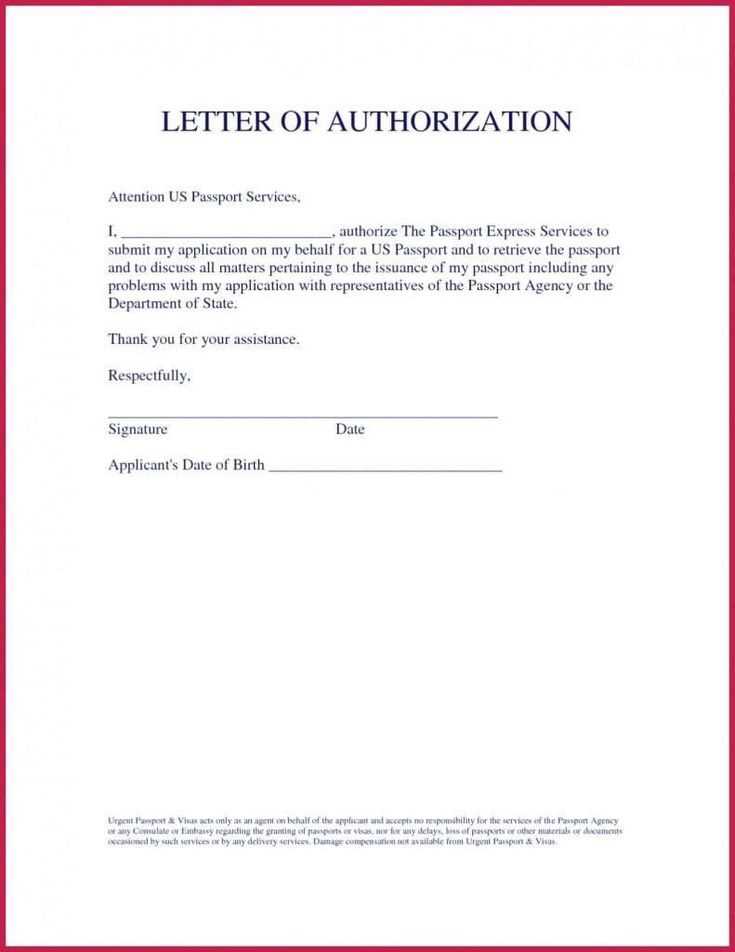
When drafting a document to grant someone the ability to act on your behalf, several crucial components must be included to ensure the agreement is clear and legally binding. These elements provide the necessary details to make the authorization valid and help avoid any misunderstandings between the parties involved.
Essential Information to Include
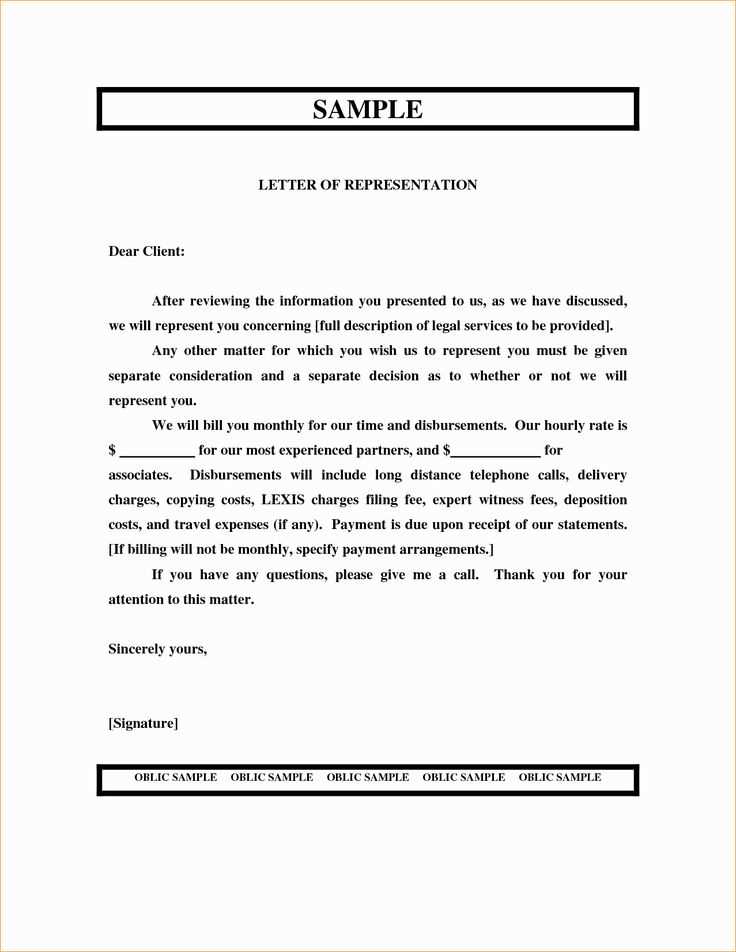
The document should contain specific information that outlines the scope and nature of the granted authority. The key elements are:
- Names of the parties: Clearly identify both the individual granting power and the one receiving it.
- Details of the granted power: Specify what actions the person is allowed to take on your behalf.
- Duration of the agreement: State how long the authorization is valid, whether it’s a set period or until certain conditions are met.
- Signatures: Both parties should sign the document to make it official and binding.
- Revocation clause: Include a provision for terminating the arrangement if necessary.
Additional Considerations
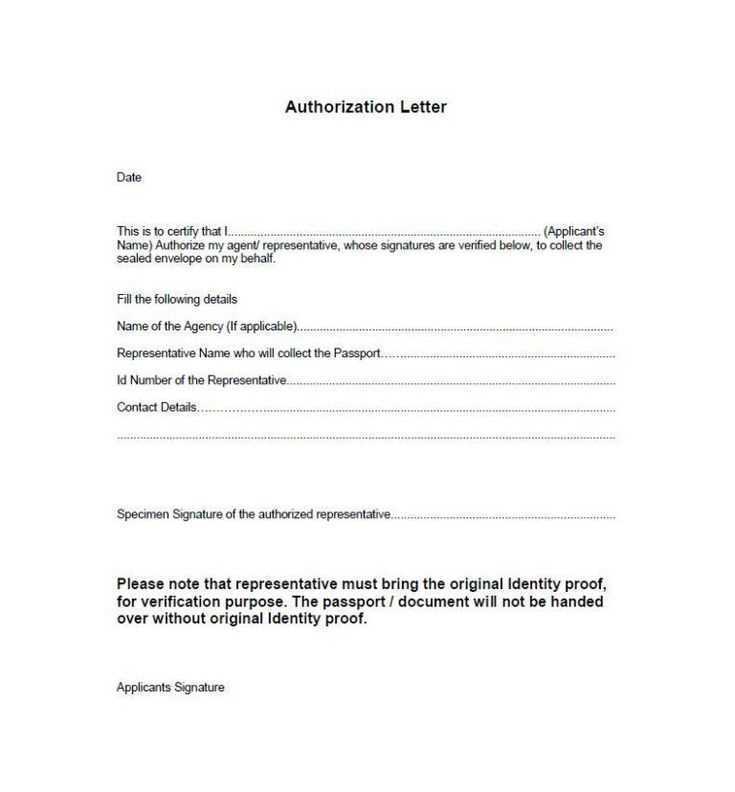
Depending on the situation, you may need to add extra clauses to protect both parties. For example, if the authorization involves financial transactions, you might include a section that outlines specific limits on spending or decision-making.
Steps to Write a Representative Letter
Creating a formal document that grants someone the ability to act in your place requires careful attention to detail. The process involves ensuring that the document clearly defines the scope of authority, identifies all parties involved, and includes necessary legal protections. Following a structured approach will help you draft an effective and binding agreement.
Start with the header: Begin by stating the full names and contact information of both the person granting power and the individual receiving it. This helps establish the formal nature of the document and ensures clear identification.
Define the scope of authority: Be specific about what actions the person is permitted to take on your behalf. Whether it’s signing contracts, managing accounts, or other specific tasks, outlining these duties prevents confusion.
Specify the duration: Indicate how long the authority is valid. Whether the power is granted for a specific time period or until certain conditions are met, this information is vital to avoid misunderstandings.
Signatures and date: Both parties should sign the document, and it should be dated to confirm its legitimacy. This formalizes the agreement and provides legal proof of consent.
Consider additional clauses: Depending on the situation, it may be necessary to include extra terms, such as revocation clauses or limits on actions. These can provide further security and flexibility as circumstances change.
Legal Considerations for Authorization Letters
When granting another person the ability to act on your behalf, it’s crucial to understand the legal implications and requirements involved. Without proper legal considerations, the agreement might be challenged or deemed invalid. Ensuring compliance with relevant laws and including essential clauses will safeguard both parties and ensure that the document holds up in legal situations.
Several legal aspects must be taken into account when drafting such a document, including the legitimacy of the granted power, the legal capacity of both parties, and the conditions under which the agreement can be revoked or modified. Below is a table outlining key legal factors to consider:
| Legal Factor | Description |
|---|---|
| Capacity of the parties | Both parties must be legally competent to enter into the agreement. The person granting power should be of sound mind, and the recipient must be legally able to act on behalf of another. |
| Specificity of powers | The scope of authority must be clearly defined, indicating what actions are allowed and which are not. Vague or general terms may lead to confusion or legal disputes. |
| Revocation terms | The agreement should specify how the grantor can revoke the powers, ensuring that the arrangement can be terminated if circumstances change. |
| Compliance with local laws | Make sure the document complies with local or national laws that govern such agreements, as legal requirements can vary depending on the jurisdiction. |
Common Mistakes to Avoid in Letters
When drafting a formal document to grant someone the ability to act on your behalf, it is important to avoid common errors that could undermine its effectiveness or lead to misunderstandings. These mistakes can create confusion, invalidate the agreement, or complicate legal matters. By paying close attention to details and adhering to best practices, you can ensure that the document is clear, legally sound, and free of complications.
Vague language: One of the most frequent errors is using unclear or ambiguous terms. Always be specific about the actions you are authorizing. This reduces the risk of misinterpretation and ensures that both parties are on the same page regarding the extent of authority being granted.
Missing dates and signatures: A document without the necessary dates or signatures may not be considered legally binding. Ensure both parties sign and date the document to confirm their agreement and the effective date of the arrangement.
Overly broad scope: Granting excessive or unlimited powers without clear restrictions can be risky. It’s important to outline precisely what actions are authorized, as this ensures the person acting on your behalf remains within their role and prevents misuse of the granted authority.
Failure to address revocation: Many documents overlook the importance of including terms about how the authorization can be revoked or modified. It’s crucial to specify under what circumstances the agreement can be terminated, ensuring flexibility if the situation changes.
How to Customize Your Template Effectively
Customizing a formal document to suit your specific needs requires attention to detail and a clear understanding of the purpose of the agreement. Making thoughtful adjustments ensures that the document is tailored to your situation, while maintaining legal clarity and precision. Proper customization allows you to address unique circumstances and specific requirements that align with your intent.
Identify key details: Start by ensuring that all essential information is accurate. This includes the names, addresses, and contact details of both parties. Providing correct and up-to-date contact information is crucial for clarity and effective communication.
Specify the granted actions: Clearly define what tasks or decisions are being delegated. Customize the document to highlight the specific powers or roles you wish to assign, ensuring that there is no ambiguity regarding the scope of authority.
Set timeframes: Tailor the duration of the authorization to suit your needs. Include start and end dates or terms that will help define how long the agreement remains valid. Customizing the timeframe prevents future confusion about the validity of the arrangement.
Include limitations: To avoid any potential overreach, consider adding limitations or restrictions to the granted powers. This ensures the person acting on your behalf does so within clear boundaries, preserving your interests and protecting both parties.